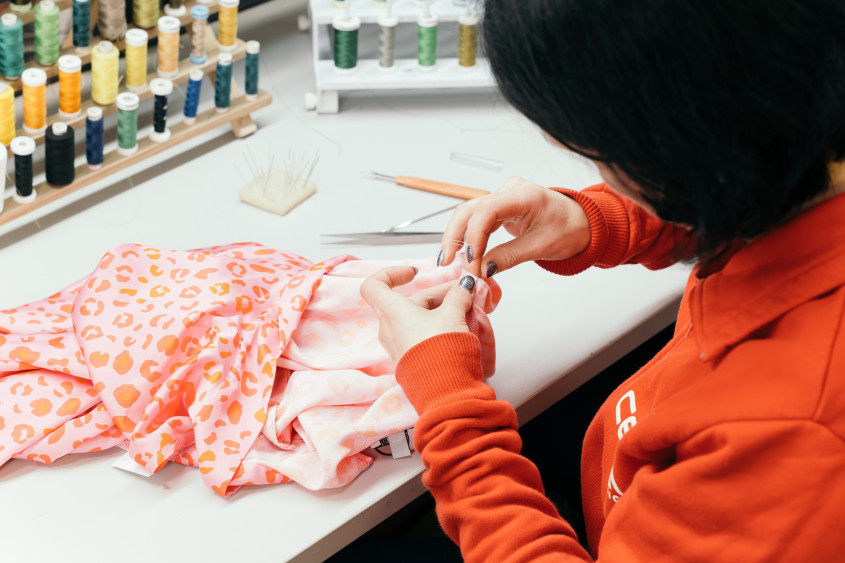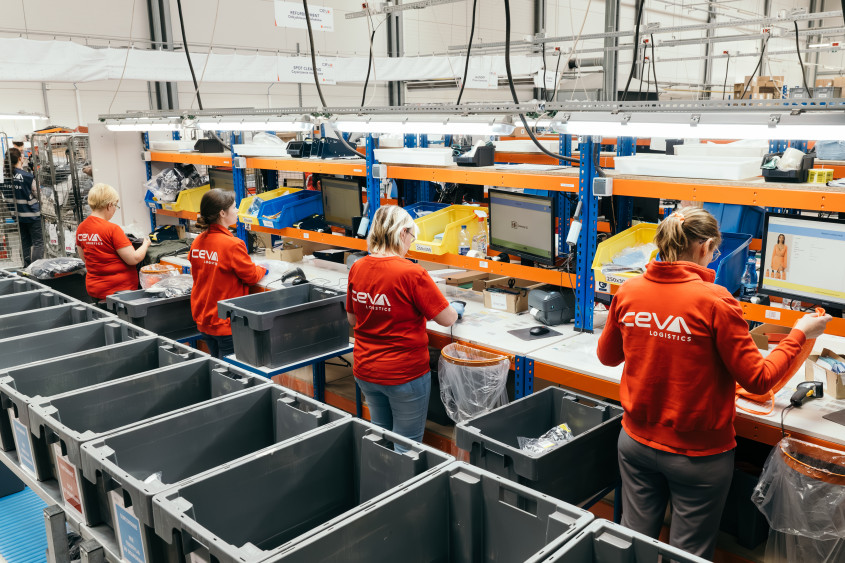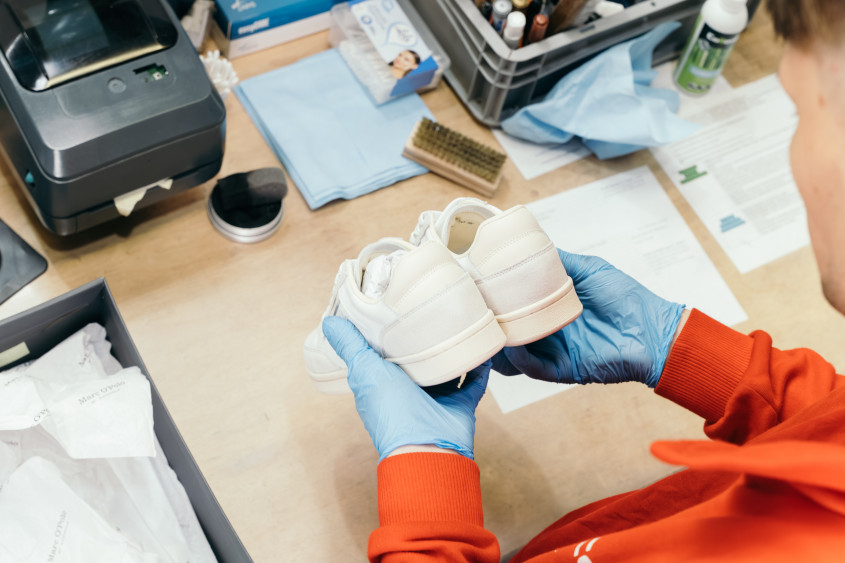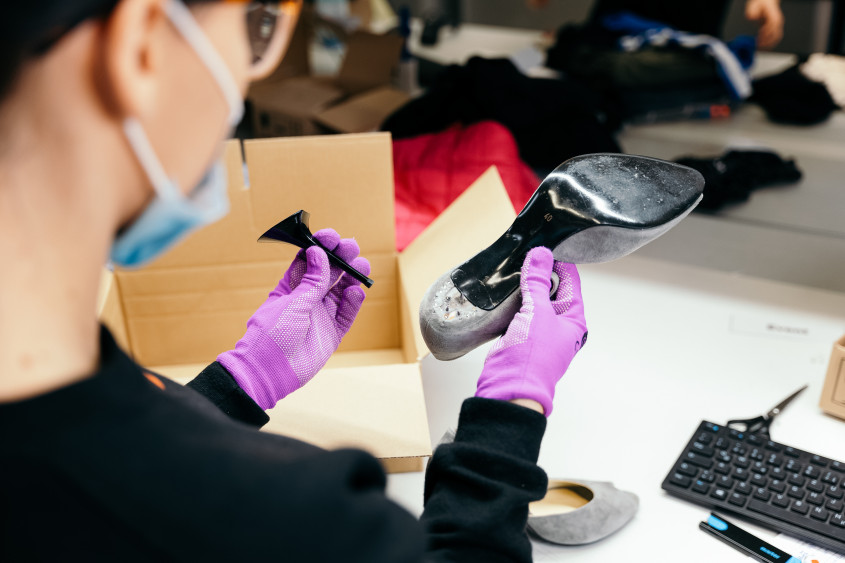Returns at Zalando
Returns at Zalando

Convenient returns have been an integral part of our service promise to customers since day one. We aim to provide them with a shopping experience that is as pleasant as possible by bringing the fitting room into their homes. Our customers can order several items, try them on in the comfort of their own homes and only keep and pay for what they really love and what fits. Since there are many questions around this topic, we explain here how we deal with returned items at Zalando and how we reduce avoidable returns.
What exactly happens to the returned items?
The majority of our customers only try on the garments once - as is also the case in brick-and-mortar fashion stores - and then return the items in very good condition. Therefore, we are able to offer around 98 percent of all fashion items returned to us directly via the Zalando Shop or our shopping club “Lounge by Zalando”. This figure includes all returns processed in our returns centers - basically all items from our wholesale business as well as items from partners who use our Logistics Solutions.
All returned items – completely independent of their actual merchandise value – are carefully checked and sorted by us in a standard procedure. We check whether the item is in perfect condition or whether, for example, stains or loose threads are visible, garments need to be cleaned or ironed before we offer them again through our online shop. Over 96% of all returned items are classified as being in “ideal condition” during this process and can be immediately added back to our offerings. The remaining items may have minor flaws, but we can easily address those in our refurbishment centers. We are always aiming to resell – it’s not just the right thing to do for the planet, it makes good business sense for us too.

How many items are returned?
In recent years, Zalando has grown considerably. At the same time, the returns rate is relatively stable: across all our markets, an average of 50 percent of the items ordered are returned.
What is Zalando doing to reduce the number of returns?
We are constantly working to reduce avoidable returns – for example, because an ordered item of clothing looks different from what is shown in the store or does not fit properly. This commitment drives our focus on optimizing product presentation and enhancing size advice.
- Optimised product presentation: We put a lot of effort into presenting all the items on the Zalando web and app in the best possible way with detailed images and descriptions. By increasing video content and introducing elevated content, we’ve seen significant improvements in terms of engagement and return rate.
- Technology-based size advice: Size-related issues account for around a third of all returns. To combat this, Zalando has dedicated teams in Berlin and Zurich continuously refining our size advice through a combination of human expertise and advanced technology.
A key innovation is Size Advice with Body Measurements: Introduced in summer 2023, this industry-first feature allows customers to determine their body measurements from just two smartphone photos, helping them to find the right fit.
We have already been able to reduce the size-related return rate for items for which we offer size-related advice (by means of size labelling and size recommendations) by 10 percent. This is not a year-on-year comparison, but a comparison of items with and without size advice within the same category and season, as product ranges and return rates vary significantly across categories - for example, it is easier to find a T-shirt that fits than a pair of jeans that do.
To further reduce returns, we are working on a virtual fitting room where customers can see how clothing fits their personal 3D avatar. Recent pilots, including one with Levi's garments, showed promising results with a 40% decrease in returns. While this data comes from a pilot and requires a larger sample size for full representativeness, it clearly indicates a promising trend we're eager to explore further.
We're committed to continually developing this technology with our customers. Additionally we are consistently updating our policies to align with industry trends and prevent potential misuse of returns.
What happens to the returned items from our Partner Program?
As a platform, we offer products in our store ourselves as part of our wholesale model by purchasing items from brands and reselling them on Zalando. In addition, brands and retailers, for example, can make their assortments available on Zalando through our partner program. More than 60 percent of the items that are sold via our Partner program are processed through our returns infrastructure, called Zalando Logistics Solution. This means that our partners have the option of shipping the goods themselves from their own logistics centers as well as using the Zalando logistics network - one of the largest logistics networks for fashion in Europe. This helps our Partners to reduce their logistics and transport costs while at the same time benefit from our professional logistics infrastructure, through which orders are shipped faster and returns are processed more efficiently and, if necessary, reprocessed. This increases the chance of reselling returned items.
Where does Zalando process returns?
In order to offer our customers the best possible service, we have built up one of the largest European logistics networks for fashion and lifestyle in recent years. In addition to our logistics centres, which focus primarily on processing and shipping orders, for several years we have had a dedicated network of around 20 specialised return centres close to the sales market. These locations are located throughout Europe so that we can process, refund and resell returned items as quickly and locally as possible. The returned items are not shipped directly from the return centres for the next order, but are first consolidated and brought back in bulk to one of the logistics centres within our network. This approach helps reduce overall transportation fuel consumption and packaging waste compared to sending individual, partially empty packages with returns directly from customers to our logistics centers.

Don't the returned items then travel very long distances?
The garments returned to us are collected in specialised return centres and finally brought back to one of our logistics centres, from where they start their journey to our customers again. We decide exactly where to store the items based on factors such as the likelihood of resale in the region or market. We have developed our own algorithm based on predictive analytics and are constantly improving it, so the predictions become more and more accurate. Broadly speaking, our algorithm is taking into account e.g. the sales data of the last weeks for the respective items as well as the current number of stocks in a logistics site. It can therefore happen that a returned item travels comparatively longer distances to enable resale and thus further use. At the same time, we are working to continuously reduce our emissions rate. From 2021 to 2024, we were able to decrease Scope 3 emissions in the area of upstream transportation and distribution from 8,5% in 2021 to 7,0% in 2024.
What happens to the items that cannot be sold anymore?
Returned items that we can no longer offer via the Zalando Shop - be it merchandise from the previous season, items that are only available in a few sizes, or those with minor defects - we offer throughout Germany in our Zalando Outlets. Items from previous seasons are also frequently offered on “Lounge by Zalando”. In addition, we take the opportunity to donate remaining stock to organizations such as humedica or sell it to wholesale partners. This way we avoid destroying goods if they can still be used in their original form.We only work with selected aid organisations and wholesale partners.

Does Zalando destroy returns?
Only in exceptional cases, we are required to destroy articles, for example if this is necessary for health or legal reasons (e.g. in the case of product recalls, pollution, pest infestation) or if products are broken and cannot be resold.

Returns are one main driver of your carbon footprint. What are your plans to reduce CO2 emissions?
We are aware that the delivery and returns of our parcels generate CO2 and we are looking into actions to reduce our impact on the climate. We are trying to reduce the number of unnecessary returns with more detailed product descriptions or improved size advice. We also offer our customers the option of returning different orders in a single package and constantly provide them with educational content regarding how to reduce avoidable returns. From 2021 to 2024, we were able to decrease Scope 3 emissions in the area of upstream transportation and distribution from 8,5% in 2021 to 7,0% in 2024.
Our industry is facing some major sustainability challenges and a general waste problem - and we don't have all the answers yet. We are committed to working collaboratively with others in the industry to foster positive change and drive meaningful progress.